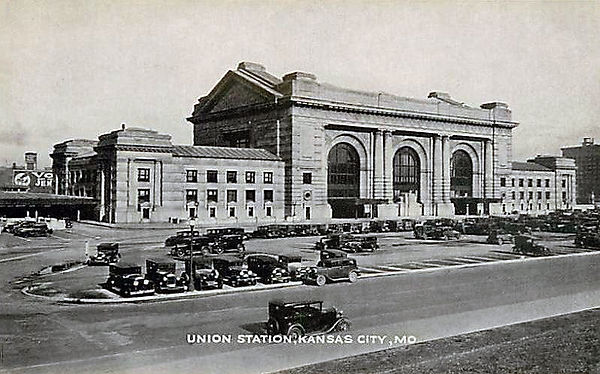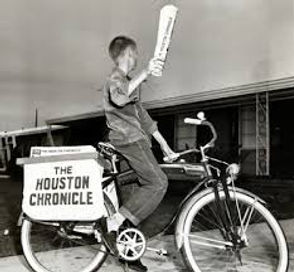Small Town Life //
Moral Universe
Views of a Typical Midwestern
Town in the mid-1950’s – Notes
-
“We live together, work together, make our common cause together, and each of us is called upon to sacrifice something for the many freedoms we enjoy.”
-
Around 1:20, they show a statue of a Native American sitting atop a courthouse.
-
1:45 – “By the time railroad came, we were a thriving, prosperous community, boasting many homes.”
-
Around 2:30, they discuss World War I and the young men from Ottumwa who fought in it. There’s a sense of celebrating war and bravery.
-
4:30 – “It’s a good place to live; a rich, thriving city in step with the nation’s progress, serving the heart of the great Midwest.”
-
At the tail end of the video, they get into some interesting commentary on beauty standards. “Carol Morris competed with some of nature’s loveliest creations and won the title of Miss Universe. When people talk about midwestern beauty, this is what they mean, and we’re mighty proud of it.”
Views of a Typical Midwestern Town in the mid-1950's
1952: A Day in the Life of a 1950's Small Town
1952: A Day in the Life of
a 1950's Small Town - Notes
-
This video tries to show us a typical day in the town of Millwood. It’s also really funny. Prepare to laugh. The video has a heavy-handed neighborhood/friendly/morally upright vibe to it.
-
0:45 - “While Richard sleeps the men at the dairy are filling bottles with fresh milk… long before daybreak, Richard’s milkman picks up the milk and delivers it to the Anderson home in time for breakfast.”
-
1:30 – “Yes, Richard’s community is always at work.”
-
2:25 – “The newsboy is already riding down the street and delivering the paper to Richard’s home.”
-
3:00 – “Richard has never really stopped to think how the people of his city depend on each other.”
-
The video goes on to describe various professions and people in Millwood; everyone in Millwood is always hard at work.
The Railroad
U.S. Railroad History Map 1830s - 1990s
-
The Golden Age for railroad was from the end of the Civil War to WWI.
-
1930 - height of railroad's popularity
-
Popularity hit a low in the 70's, and has been on a downward spiral since.
Note: "o" denotes a short sound; while a "-" is for a longer sound.
- When stopped, air brakes applied, pressure equalized.
- - Release brakes, proceed.
0 0 Acknowledgement of any signal not otherwise provided for.
0 0 0 When stopped, back up; acknowledgement of hand signal to back up.
0 0 0 0 Request for signal to be given or repeated if not understood.
- 0 0 0 Flagman protect rear of train.
0 0 0 - Flagman protect front of train.
- - - - Flagman may return from west or south.
- - - - - Flagman may return from east or north.
- - 0 - Approaching public grade crossing.
0 - Inspect brake system for leaks or sticking brakes.
A series of short blasts is sounded in an emergency.
From the "General Code of Operating Rules"
Whistle Signals


Kansas Railway System, early 50's
United States Railway Map, 1953



Paperboys
Richard Judy, a World and Tribune paperboy for the city of Tulsa in the 1950's, speaks about his time delivering papers:
"Growing up in midtown Tulsa during the late '40s and early '50s before the era of fast food, my life centered around starting first grade, receiving First Communion, first girlfriend and, at age 12, getting my first job as a paper carrier.
"For many of us who lived in low-income households, the paper route was like having a blank check placed in front of us. Now I could afford to play pinball machines, eat ice cream, buy clothes, and even afford visits to the dentist.
". . . I was always amazed at the generosity of my customers during the holiday season. Gifts, candy and tips were the order of the day.
"However, this was superceded by the kindness of the Newspaper Printing Corp. toward its paper carriers. They spared no expense in showing their gratitude toward those of us who chose to brave the elements and barking dogs to serve our Tulsa World customers."
Fun Facts about Paper Boys
-
Most "paperboys" (hence forth referred to as "carriers") were just that - boys - though some girls delivered papers as well.
-
Carriers delivered their papers in rain or shine, in sleet or in snow, and sometimes in below-zero weather.
-
The (roughly) $2/week that carriers made would help some poorer families stay afloat financially.
-
The worst part of the job was "collections." When subscribers didn't pay for their papers, the carriers were still reliable for the bill. Some carriers camped outside of front doors to collect their wages when subscribers were being difficult.
-
Carriers would have to rouse themselves before 4 a.m. When they overslept, their Managers would often tap on their windows to wake them up. One carrier for the Tulsa World Paper had a doorbell wired to his room.
-
Delivering papers was often a family matter. Siblings and friends sometimes shared paper routes, and parents would help out in all aspects of the job, from folding papers to rescuing their kids on snowy days.
-
The number one rule for carriers was that papers had to be "porched," so as to remain dry. Tossing the paper on the front lawn wasn't enough. Many carriers would tuck the paper between the screen and front doors.
-
Being a carrier gave young people a level of responsibility which led to a great skill set that helped them in later life.
See the full article here: http://www.tulsaworld.com/archives/kids-on-bikes-paperboys-girls-share-storied-pasts/article_9b2dfee1-b100-5915-8ffd-550d8170a5ea.html

"By WWII, the paperboy was such a common figure in America that the Treasury Department authorized them to sell War Savings Stamps. By war’s end, they’d sold $1.7 billion worth. A few years later, the Post Office issued a commemorative stamp making the paperboy a true American icon: “newspaper-boys,” it read, “standard bearers of free enterprise.”
- Richard Armstrong, "The Invention of the Paperboy"
See the full article here: http://www.uh.edu/engines/epi2382.htm


"Tulsa World and Tulsa Tribune carriers receive $250 college scholarships from Circulation Director L.W. McFetridge in July 1948. The carriers are Joe Seifried (from left), Jay Patchett, Harold Taylor and Dub Lovell."
Schoolteachers
"Go peddle your papers!" - Millie
Maintaining Classroom Discipline
This 1947 educational video depicts short vignettes in which a teacher exercises various and sundry disciplining tactics on his students.
Marriage Bars: "Must a woman.... give it all up when she marries?"
What is a "Marriage Bar?" "A marriage bar (or ban) is the custom and practice of restricting the employment of married women in general or in particular professions or ocupations. Sometimes the practice called for the termination of employment of a woman on her marriage, especially in teaching, clerical and other occupations, and sometimes widowed women with children were still considered to be married preventing them from being hired." - Wikipedia
-
There was a broader acceptance of women in teaching positions at the turn of the 20th century. Between 1870 and 1900, the number of female to male teachers increased from two-thirds of the teaching population to three-quarters. The trend of an increase in women teachers didn’t start dwindling until the 1970s.
-
Why weren’t women allowed to work?
-
Legislators argued that married women didn’t need the money from teaching, and that “hiring married women would deprive single girls of opportunities”
-
-
This proved difficult for widowed women. In 1924, Lillian Peterson, a widow with six children, couldn’t find a job in several towns because marriage bars extended to widows with children.
-
Some places in the United States lifted marriage bars earlier than others. Ultimately, the 1964 Civil Rights Act ended discrimination against married women teachers.
-
Many people spoke out against the marriage bar, including Mrs. W.J. Christie, who in 1913 argued, “The test of employment should be efficiency and nothing else.” However, many single women in teaching positions argued against Mrs. Christie’s beliefs.
-
County schools, unlike urban schools, were more welcoming toward married teachers, as they often needed people to fill positions.
-
“While some districts banned all married teachers, others were willing to employ married women if their husbands were ‘an invalid in some way’.”
-
Attitudes toward married teachers changed during WWII, and most schools were much more welcoming towards married women, as many married women stepped up while their husbands were at war. If they “were good enough… in wartime…, they’re good enough in peace time.”
-
Read the full article here: http://montanawomenshistory.org/must-a-woman-give-it-all-up-when-she-marries-the-debate-over-employing-married-women-as-teachers/


